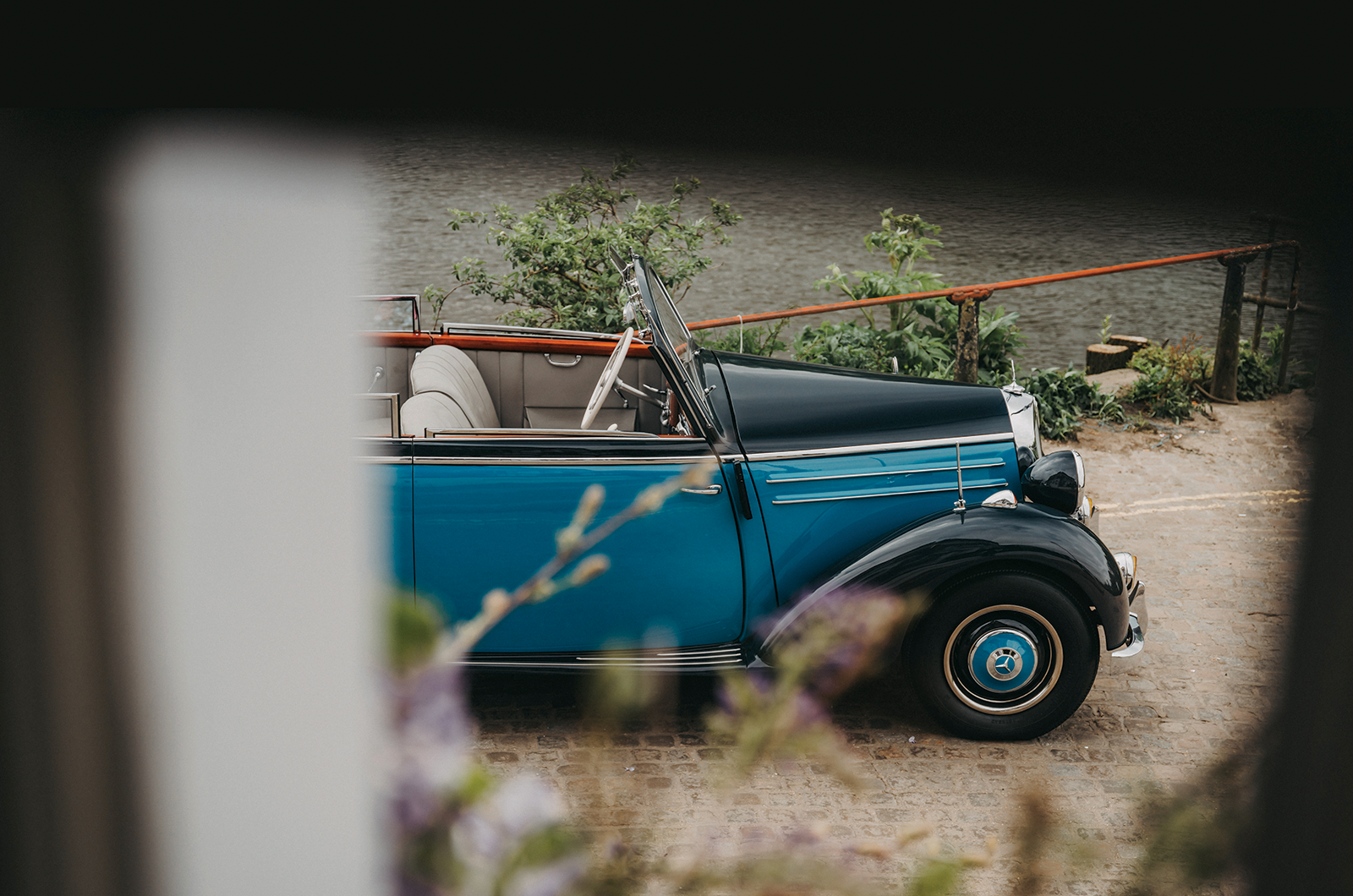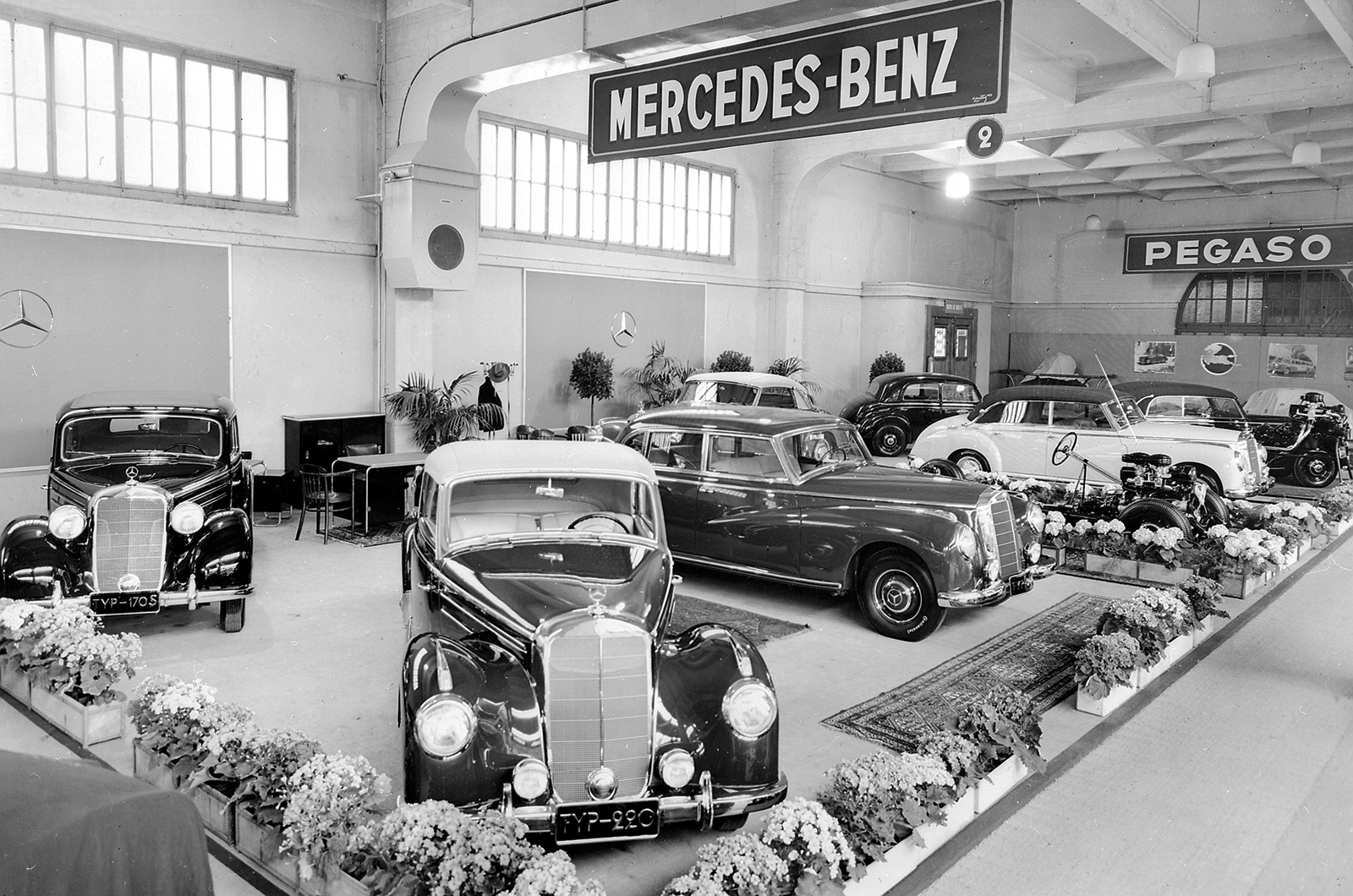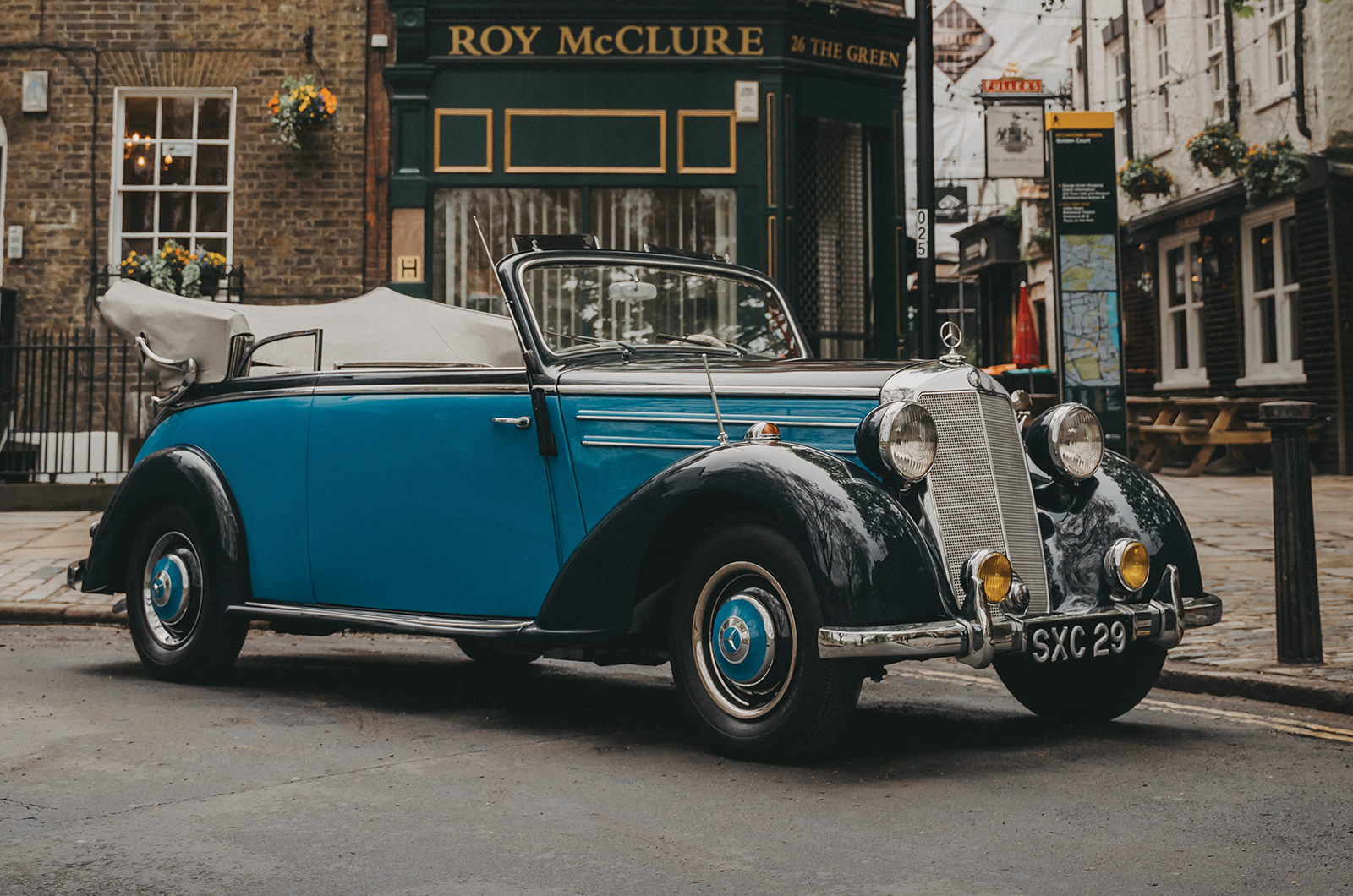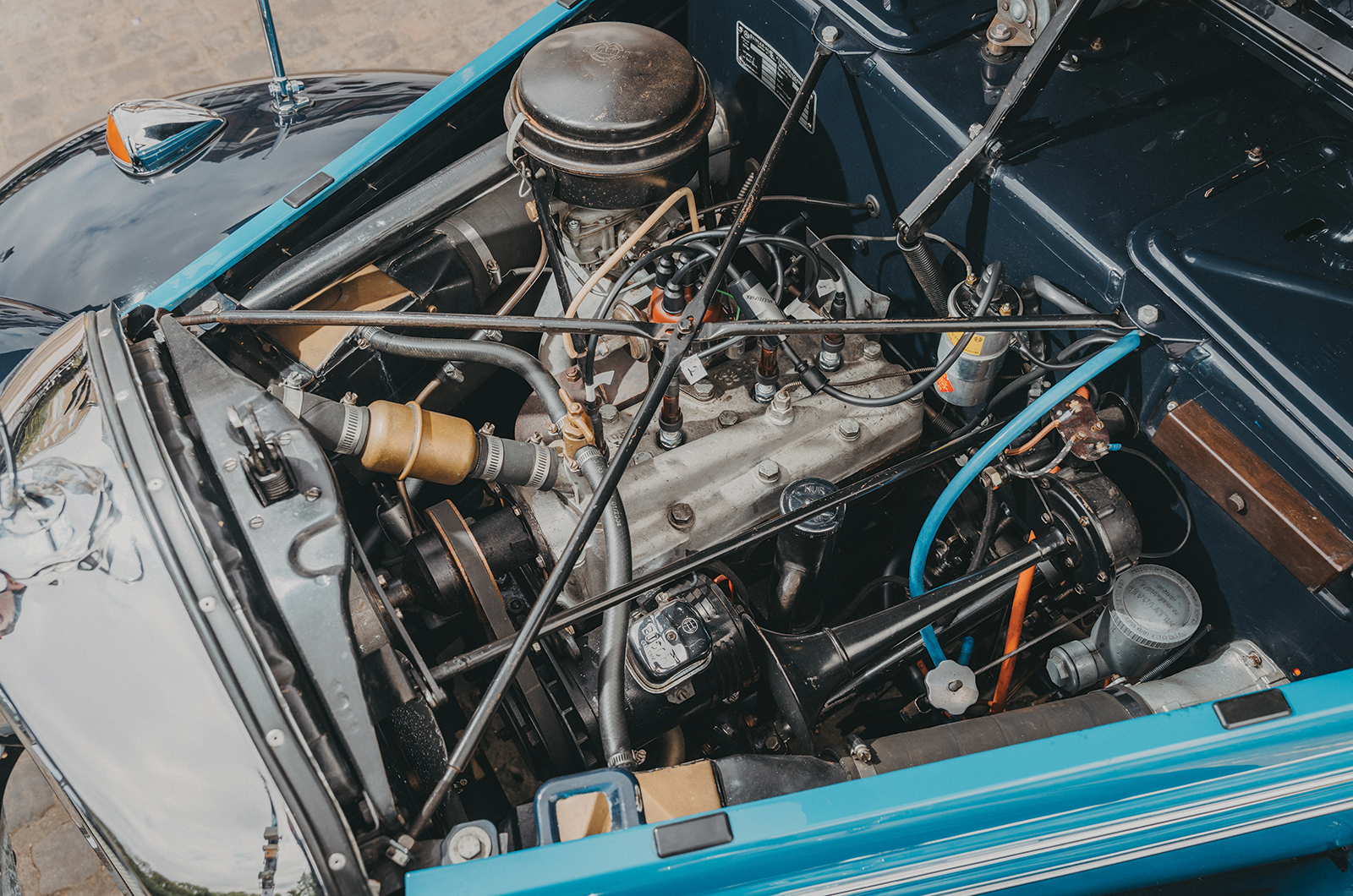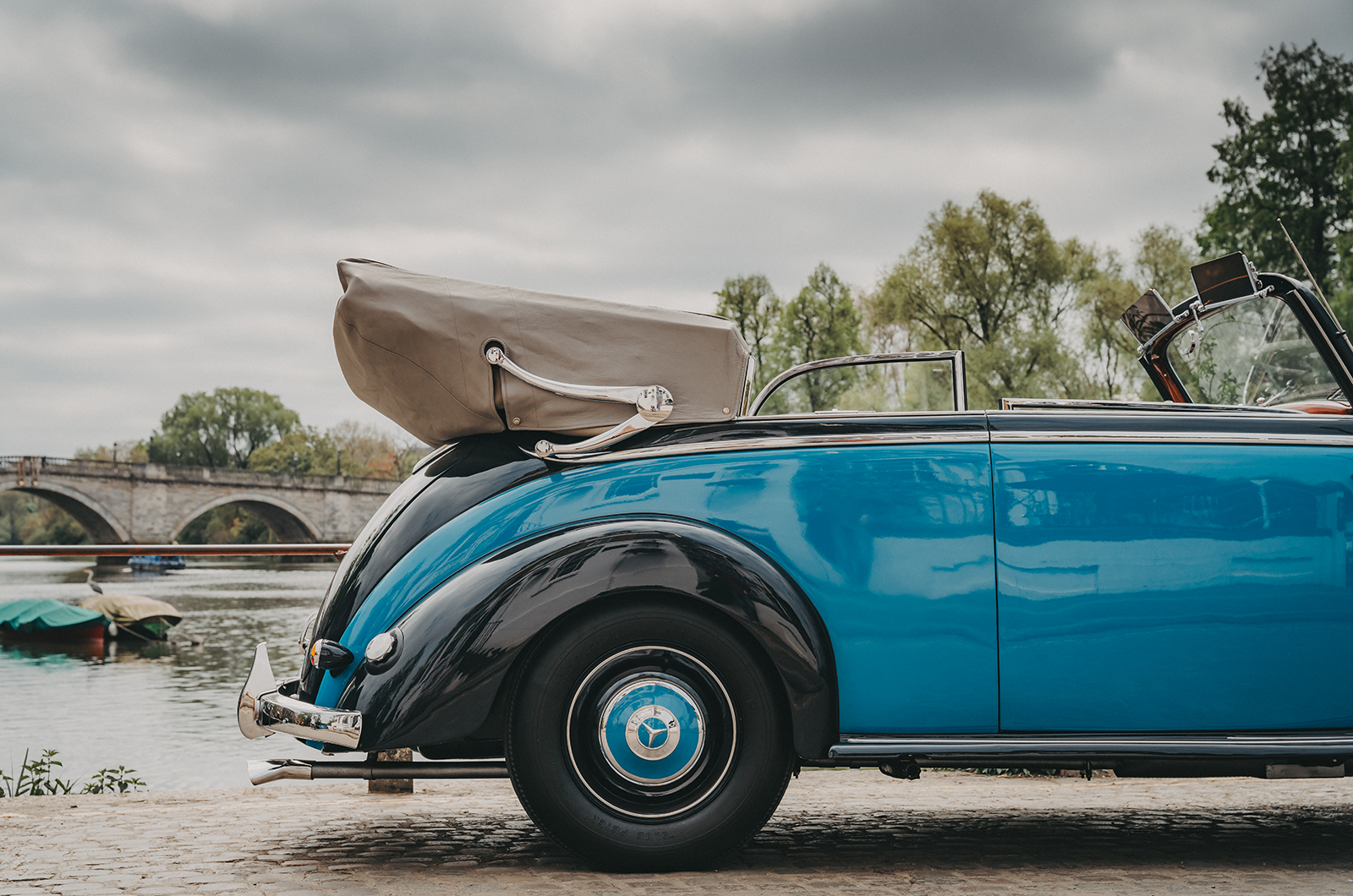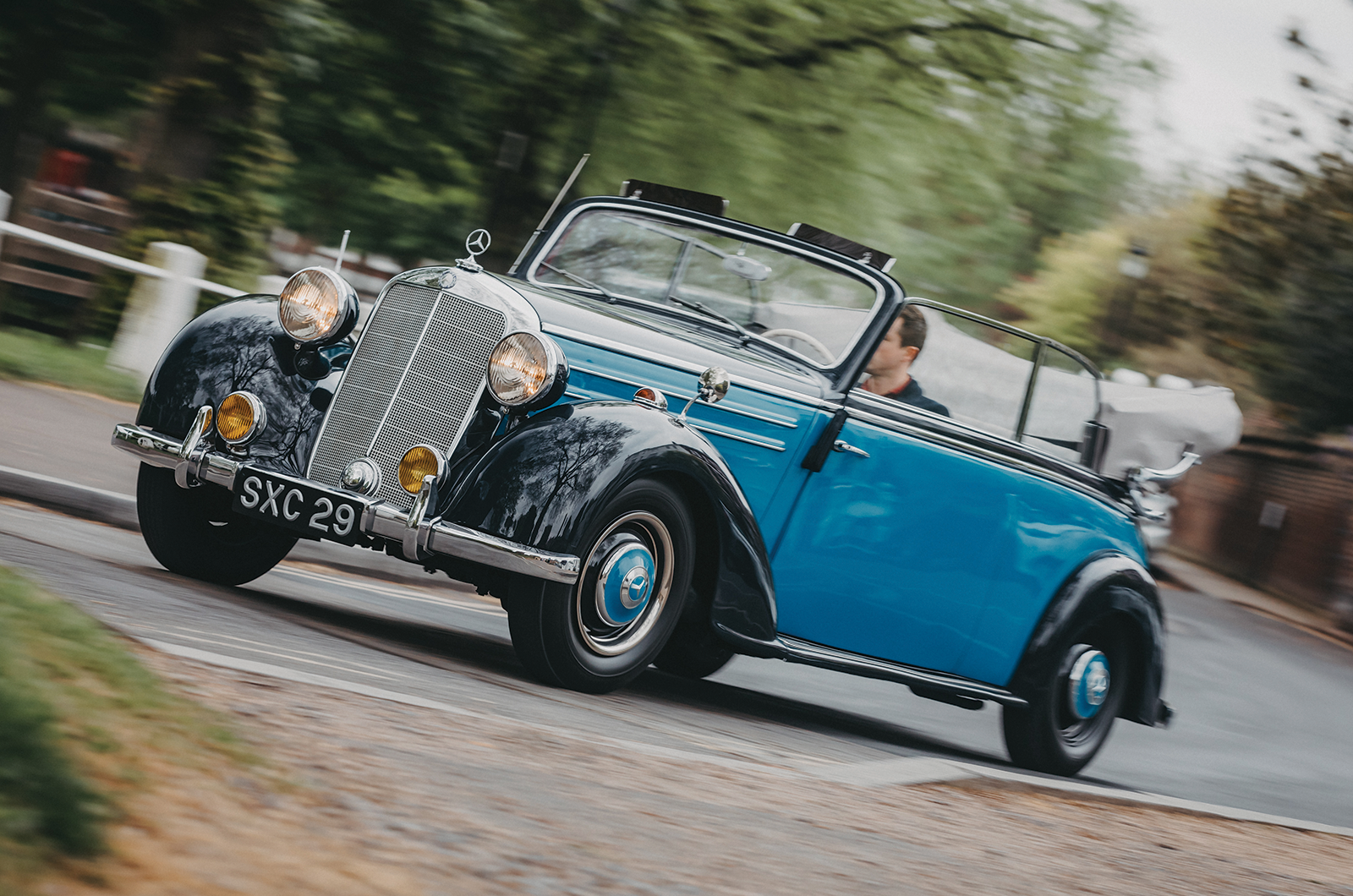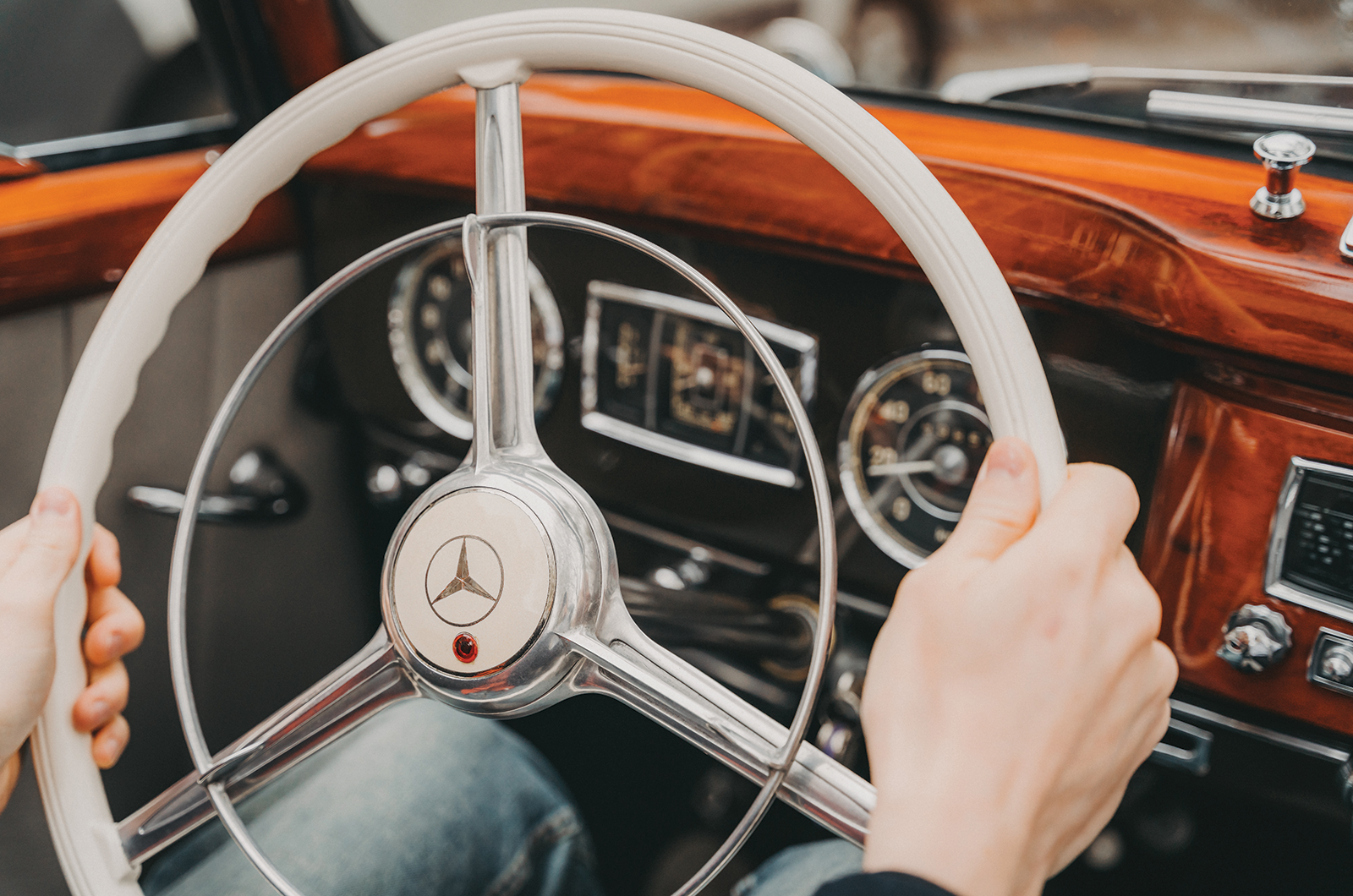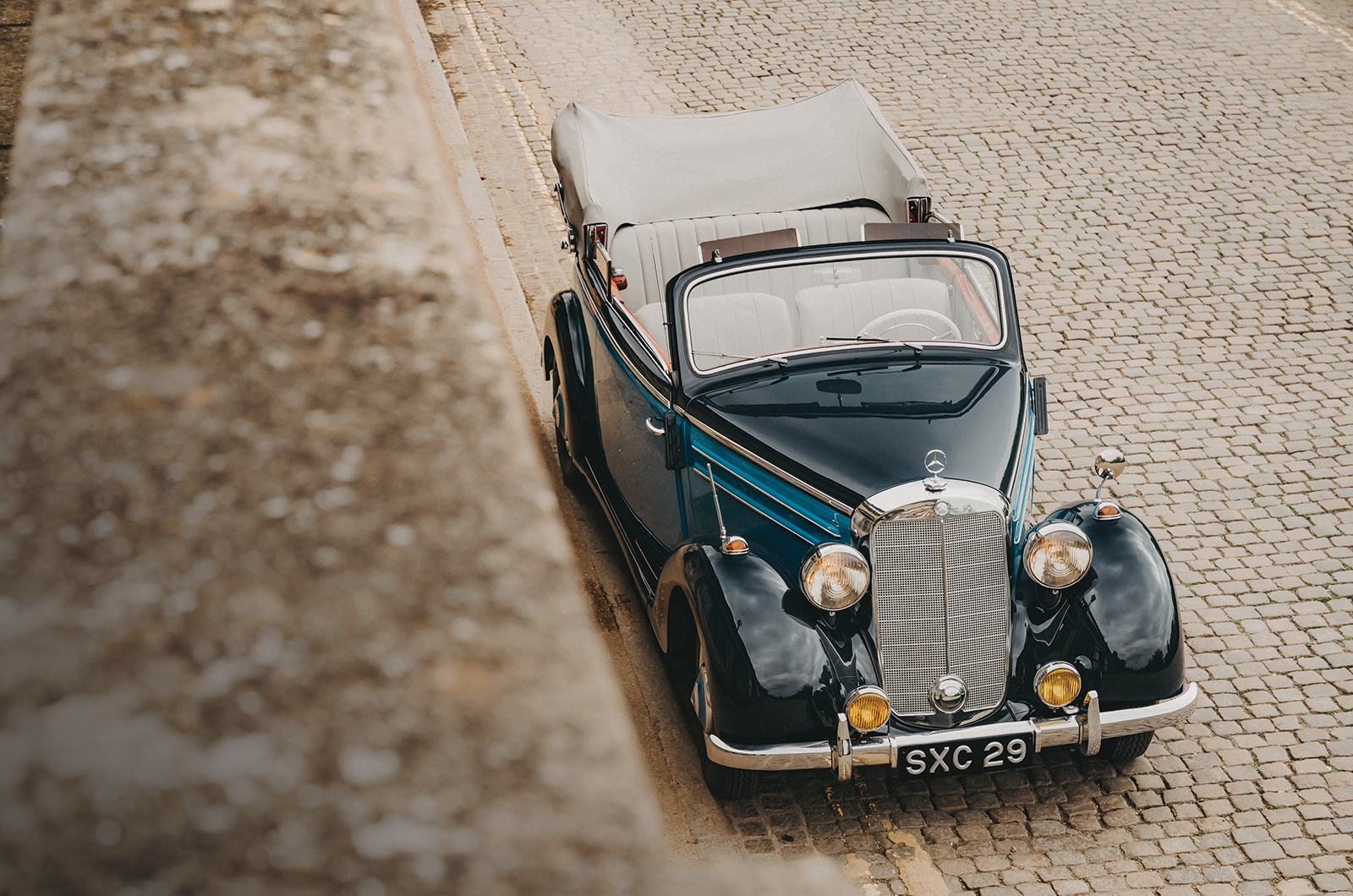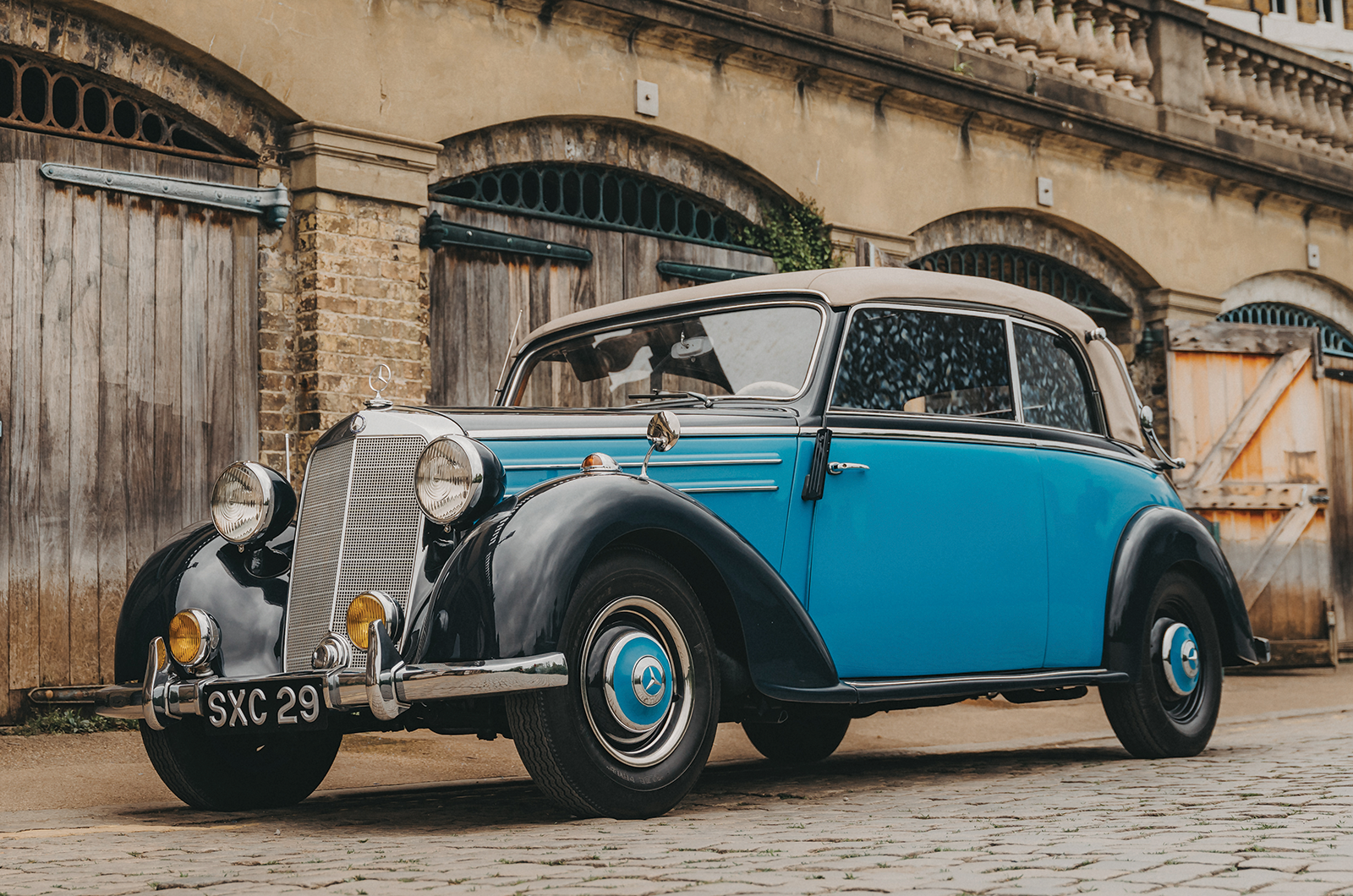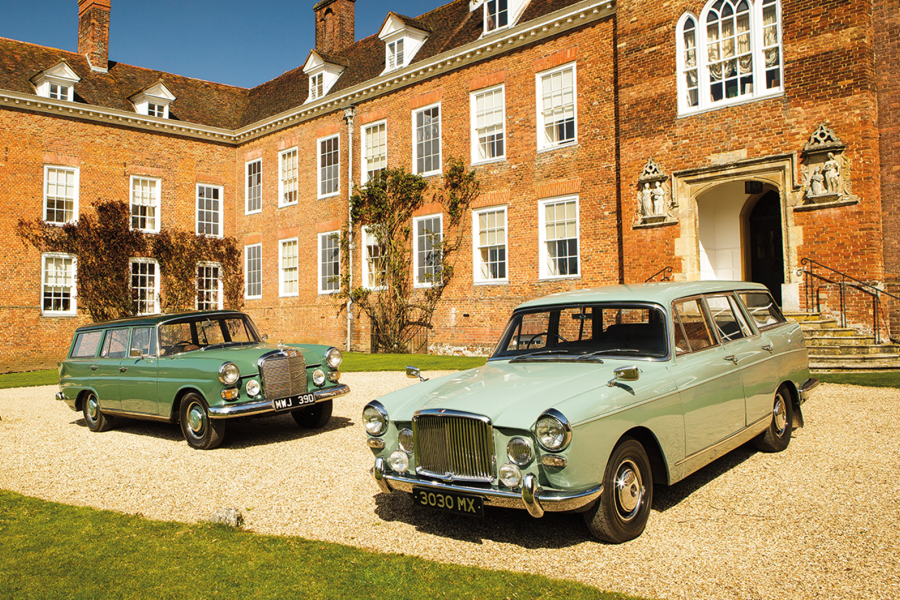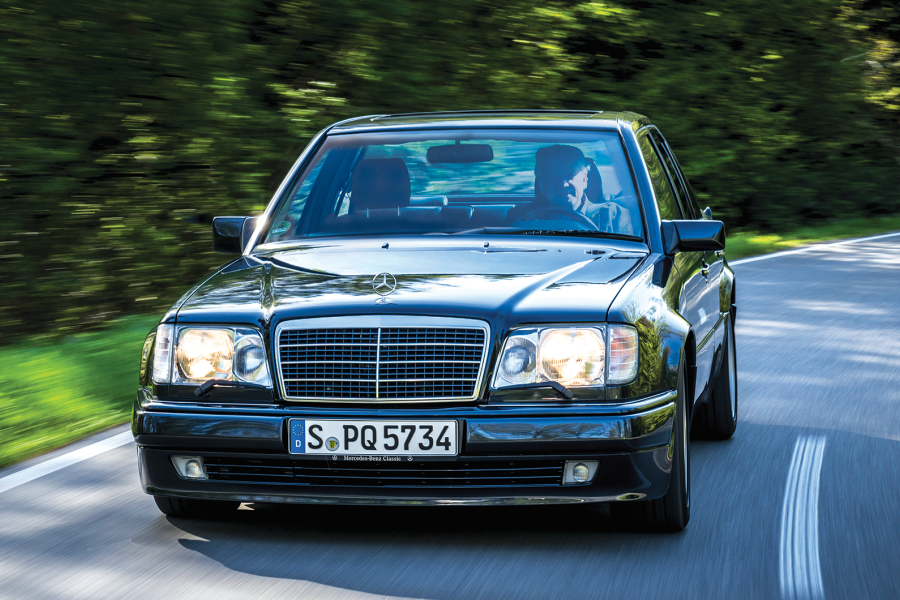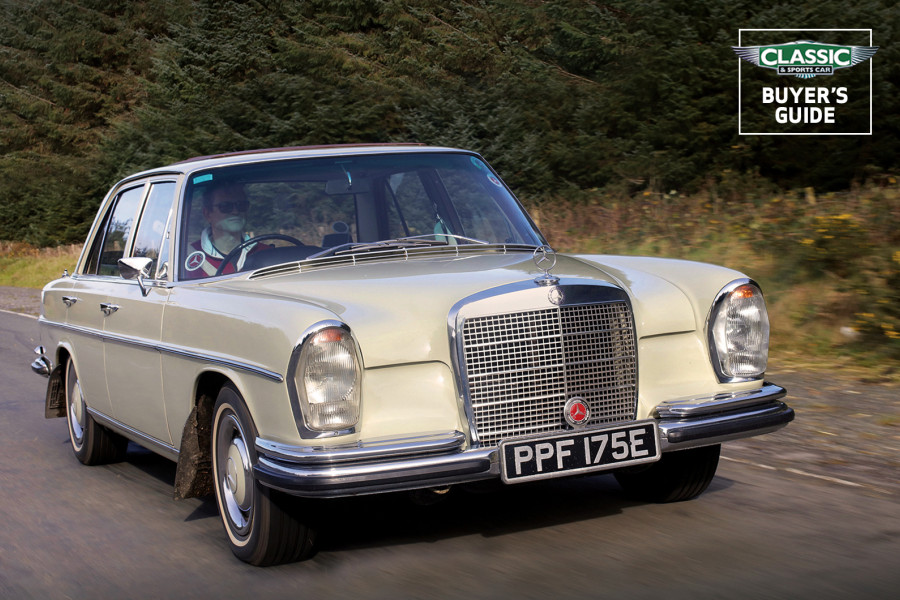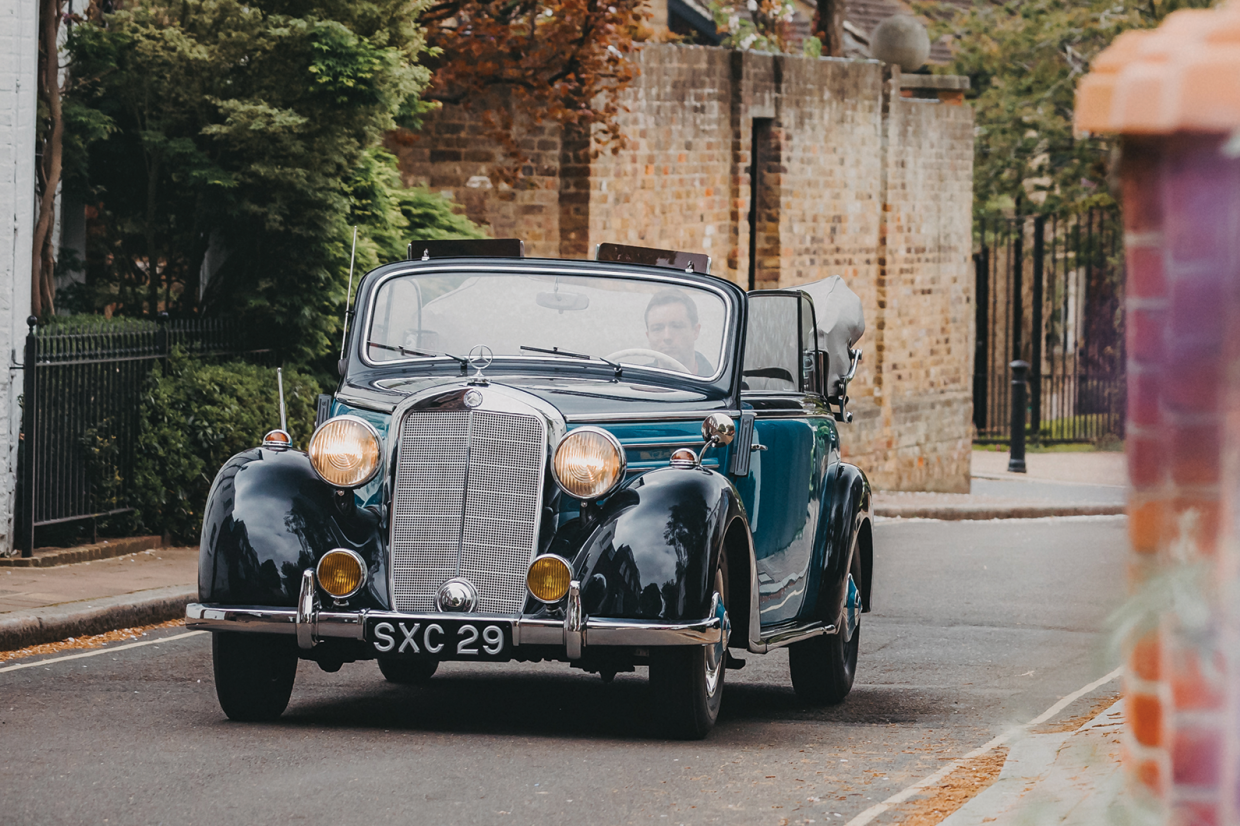
What survived those final, dark days of WW2 Germany was usually a matter of cruel chance.
Streets missing buildings like broken teeth spoke to fate’s arbitrary but absolute power.
Under what had become, by 1945, the certainty of loss, and while American bombs smouldered and Soviet lines were bolstered, Germans began picking up whichever pieces were left.
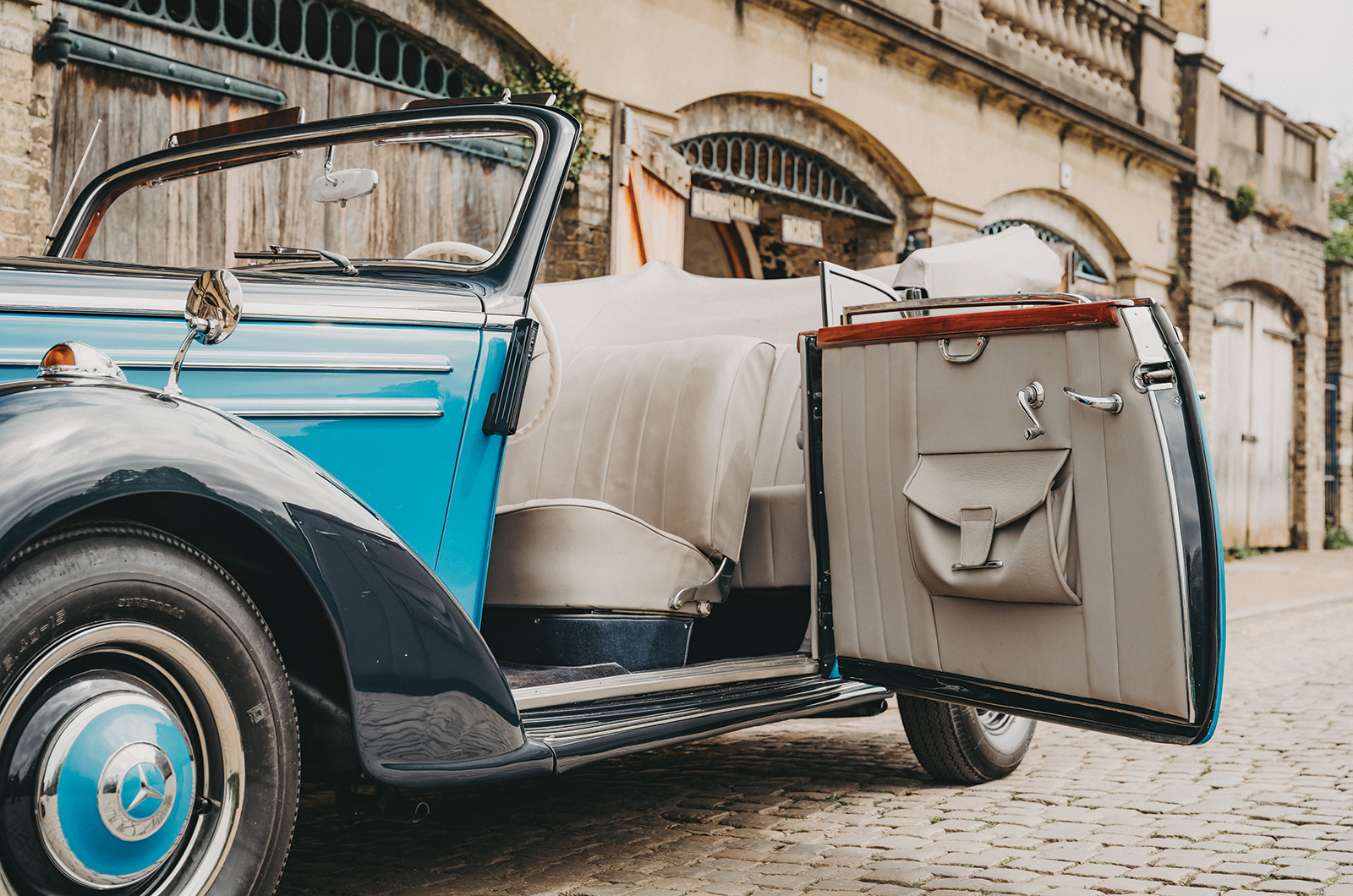
Stepping into this Mercedes-Benz 170S Cabriolet B, you are greeted with wood veneers and chrome details
Miraculously, one such piece was part of the Mercedes-Benz Untertürkheim plant in American-controlled Stuttgart.
A mere month after the thumping of shells had subsided, its gates were opened to a skeleton workforce under US supervision.
While clearing debris and running all sorts of vehicles – including many American ones – through the hastily named Stuttgart Ordnance Repair Shop, the employees at Untertürkheim began salvaging meaningful elements of the mid-sized 170V model’s production lines.
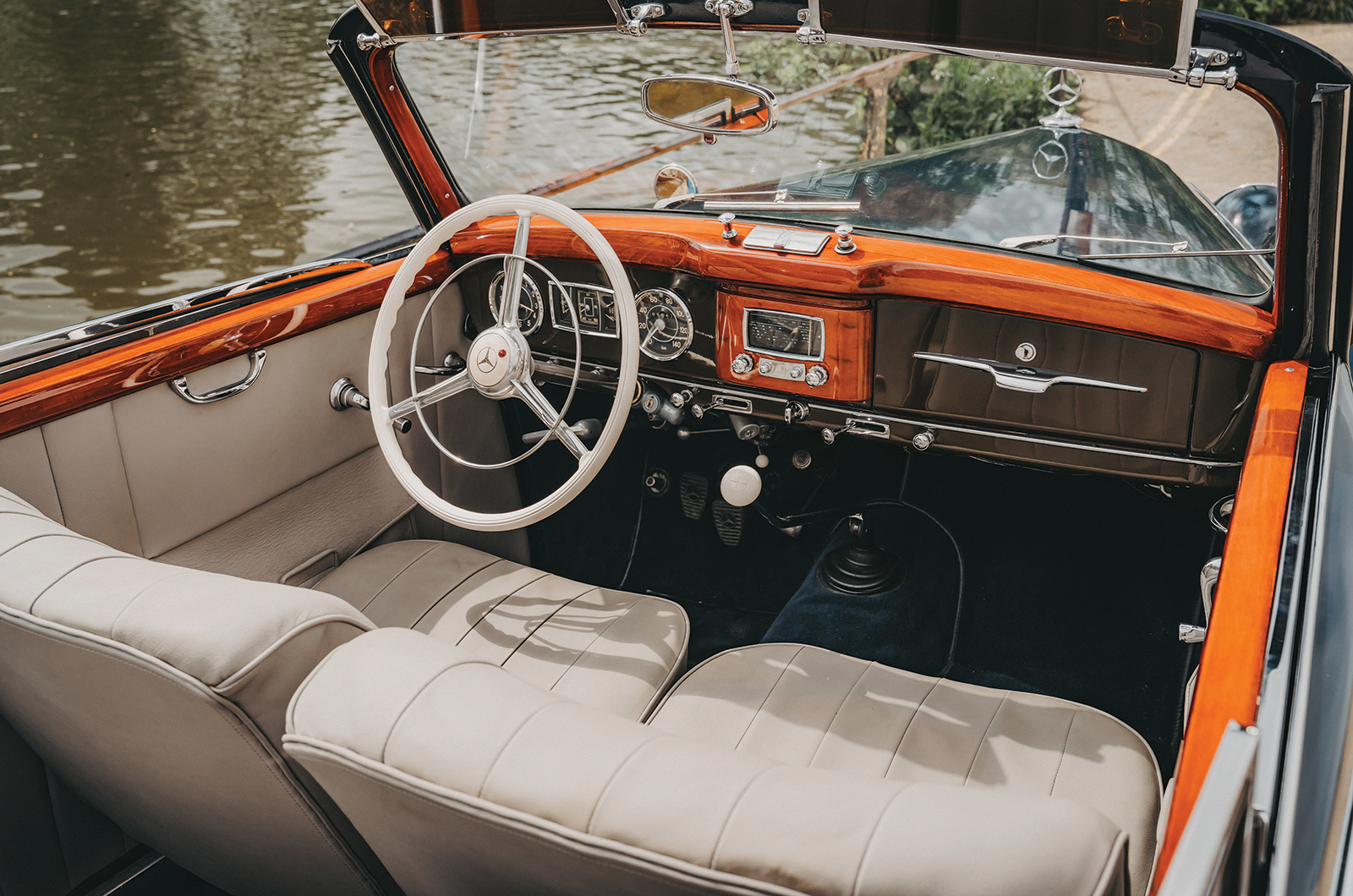
‘Falling just short of extravagant, the interior simply feels well appointed and generously proportioned’


